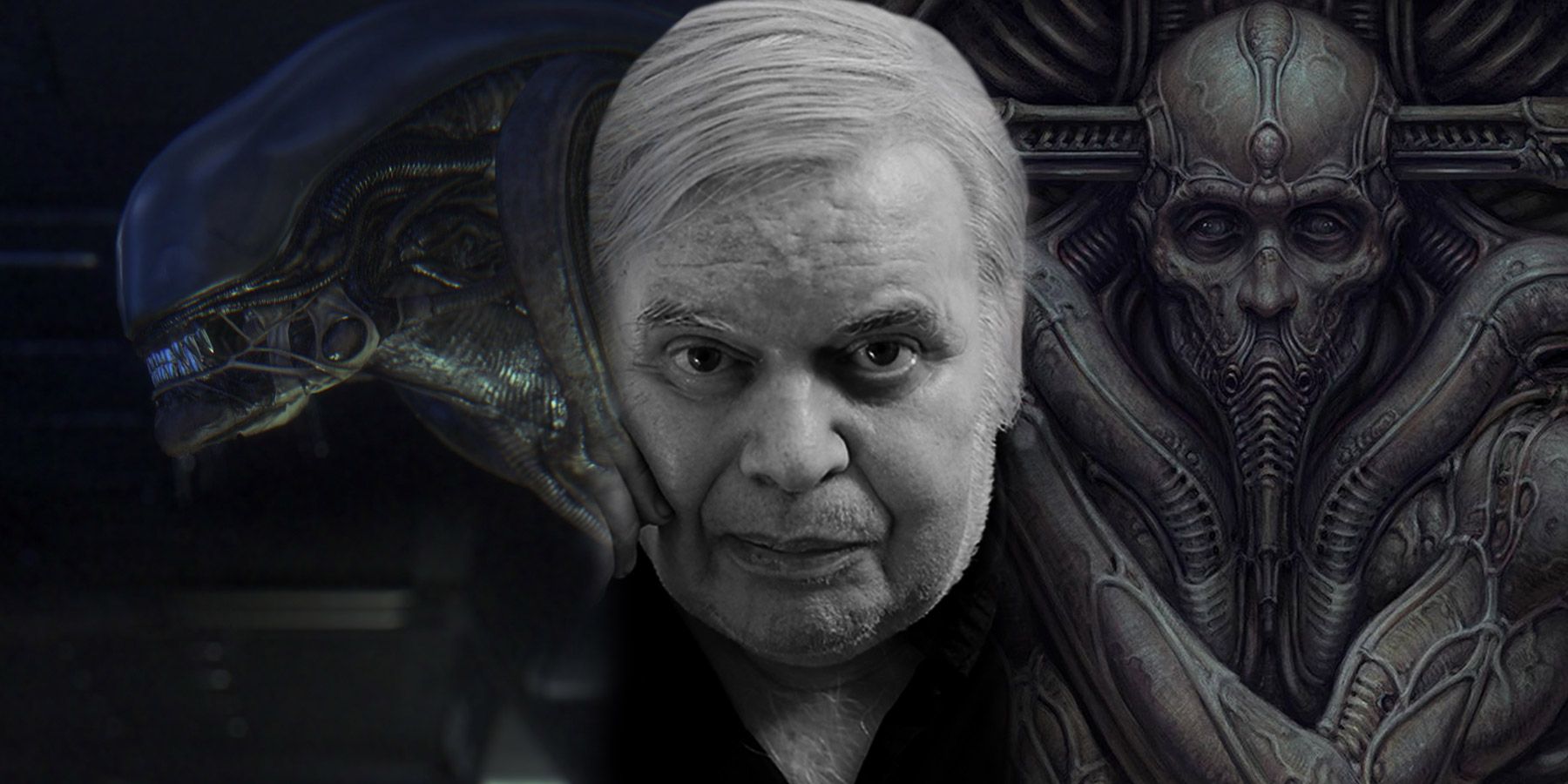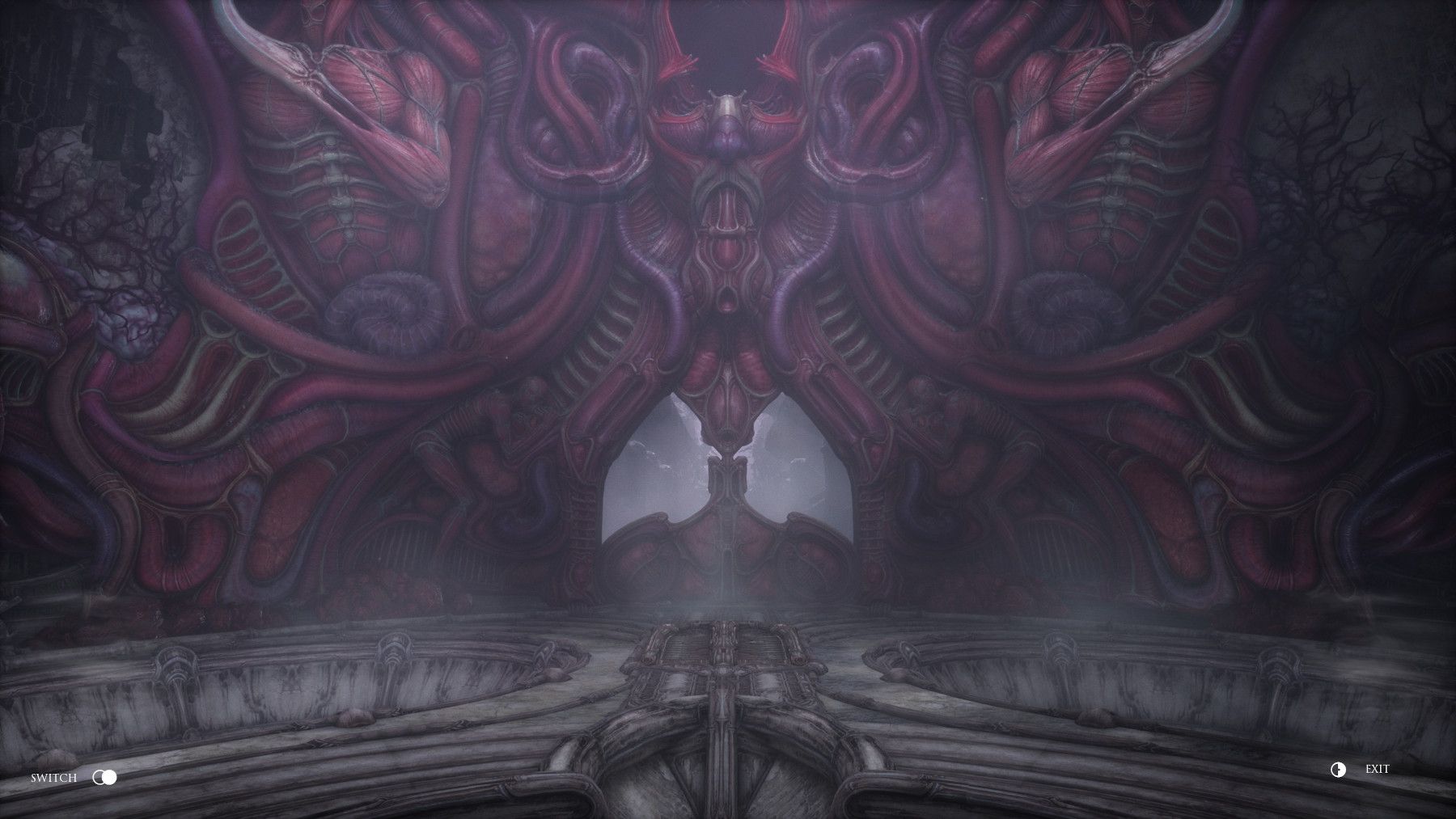Despite being a vital component of the industry, artists aren't often given the credit they deserve in the video game landscape, and it's even rarer for a singular artist to be thrust into the spotlight. H.R. Giger, however, was an exception to the rule. Born in 1940, Hans Ruedi Giger studied architecture and industrial design at a Zurich art school, all the while developing his own unique style of art. Blending machines and organic life together, this Biomechanical style would go on to influence a plethora of games over the years.
One of his first big breaks in Hollywood, H.R. Giger was hired as a concept artist on Alejandro Jodorowsky's Dune. After the experimental movie failed to move past its pre-production phase, Giger was brought on to Ridley Scott's Alien, where his nightmarish designs won the special effects team an Academy Award. Between the 1970s and his death in 2014, H.R. Giger's unique art style would influence a wide range of video games, from a Nintendo classic to a recent horror game.
H.R. Giger's Influence on Sci-Fi Video Games
One of the first video games to wear its H.R. Giger influences on its sleeve was 1986's Contra. The first in a long line of brutally difficult run-and-gun games, Contra starts out with players fighting enemy soldiers in the jungle, but as the game progresses, they'll go deeper and deeper, eventually discovering a hidden alien facility. Here, players will face off against a number of Alien-inspired bosses, each of which has a distinctly Giger-esque appearance.
While Contra may have been one of the first, it isn't the most well-known. Instead, that honor goes to 1992's Dark Seed, a grim and gritty point-and-click adventure that takes place in both a normal world and an ominous Dark World. Unsurprisingly, it's the game's Dark World that takes inspiration from H.R. Giger's art style. In fact, Dark Seed's developer Cyberdreams went one step above and directly worked with Giger, using some of his artwork for the game's backdrops. A sequel, simply titled Dark Seed 2, released in 1995, once again directly using Giger's artwork to inspire the game's backdrops, world, and enemy design.
Over the last five decades or so, H.R. Giger's wonderfully grim art style has been used to influence the enemy design of countless Sci-Fi video games. It's no secret that Metroid's original development team was heavily influenced by Alien, even naming the game's main antagonist after its director, and that influence also encompasses H.R. Giger, with many of Metroid's enemies being based on his art. The original XCOM: UFO Defense also features several enemy alien designs that take careful cues from Giger's work. On a more obvious note, H.R. Giger's influence can be seen in every single Alien video game ever released. From Alien Vs. Predator's attention to environmental detail with its Xenomorph nests, to Alien Isolation's terrifying Xeno antagonist, each and every Alien game is inherently influenced by Giger.
Most recently, H.R. Giger's influence can be seen in the horror Indie title Scorn. A first-person survival horror, Scorn drops players into a dark, dystopian world filled with Giger-esque imagery. There are elongated skulls poking out of walls, human-like husks melded into structures, and plenty of tubes running absolutely everywhere. While Scorn may not have reviewed all that well from a gameplay perspective, its art design is a real standout, and that alone is worth checking out for an H.R. Giger fan out there.


